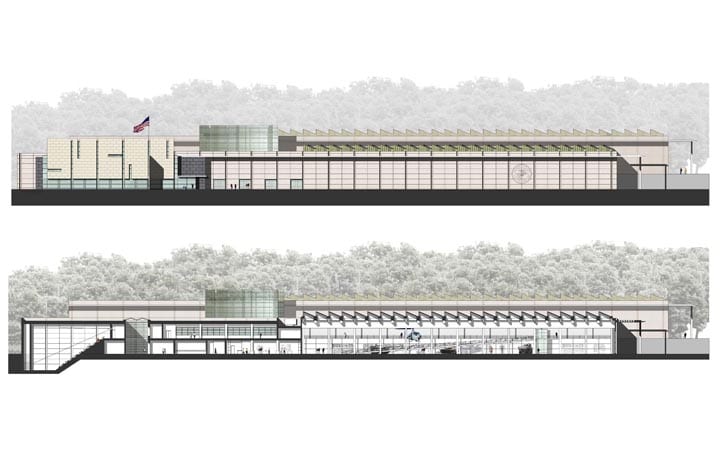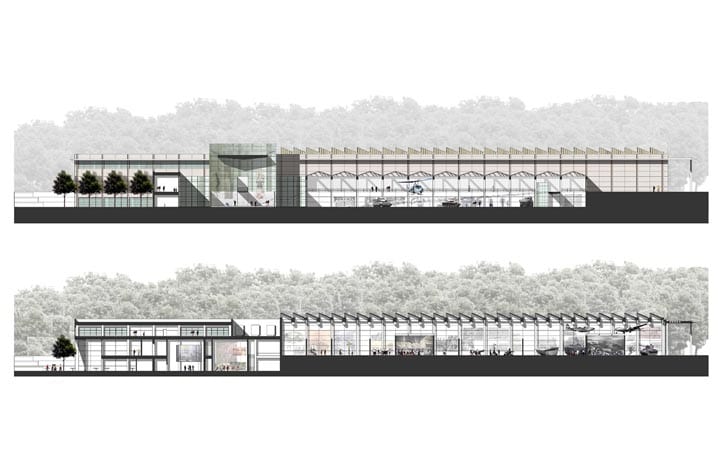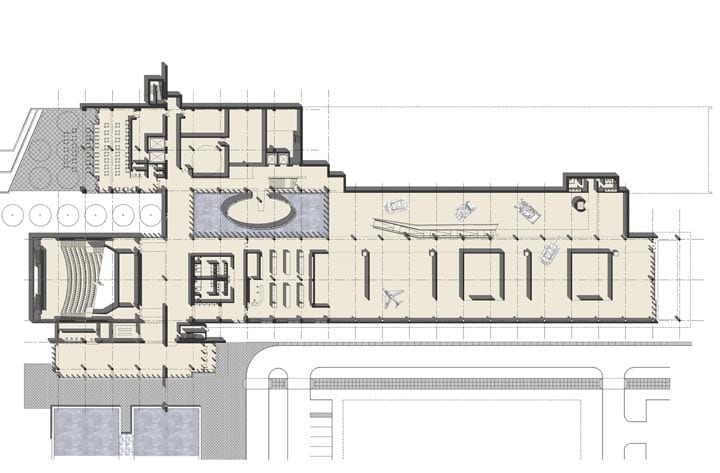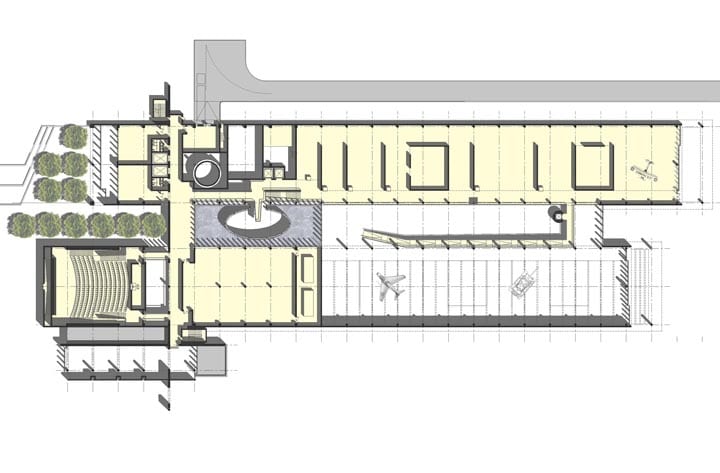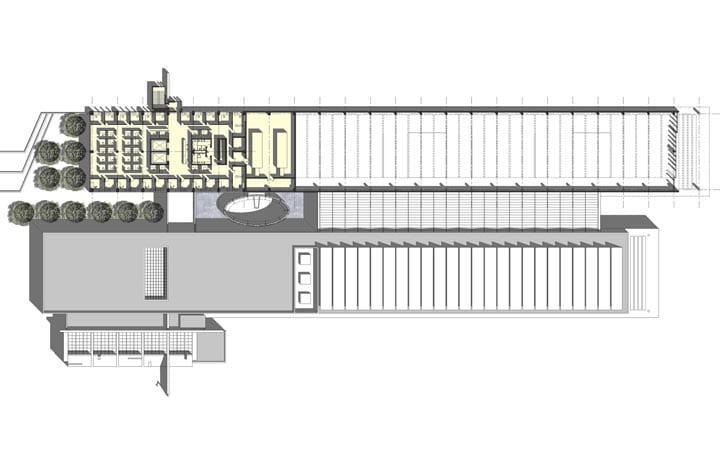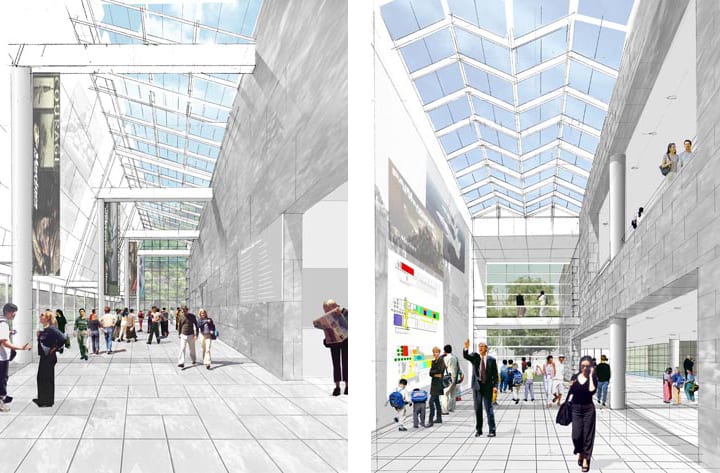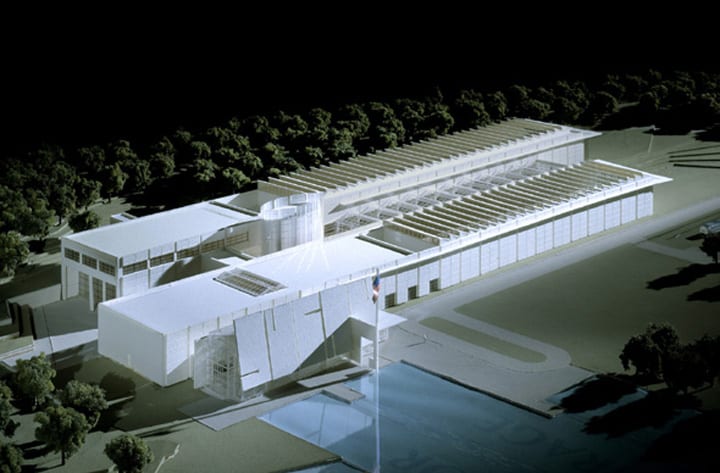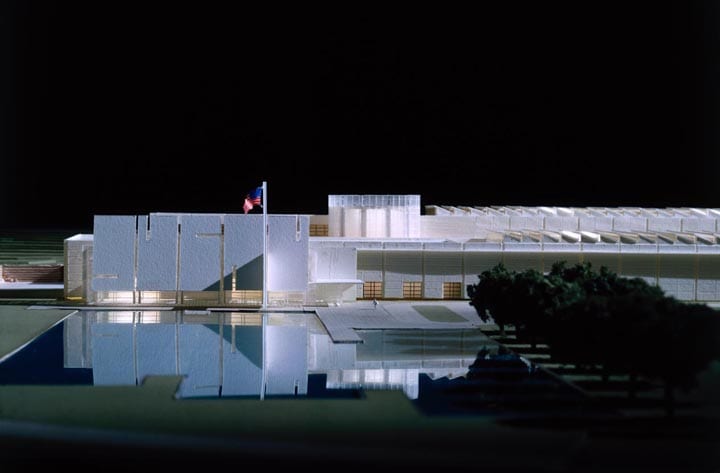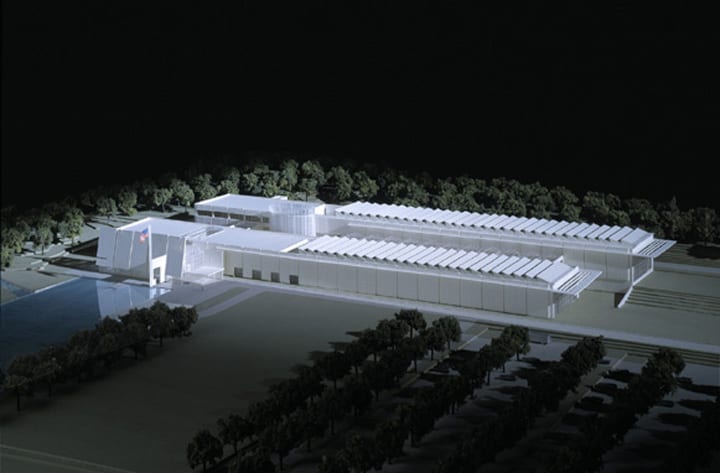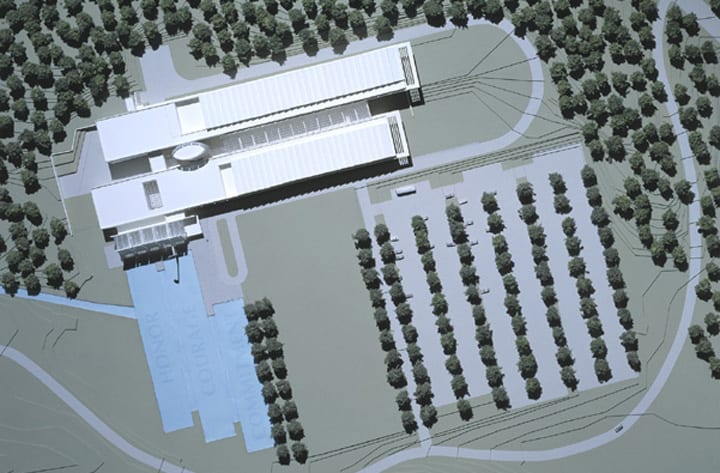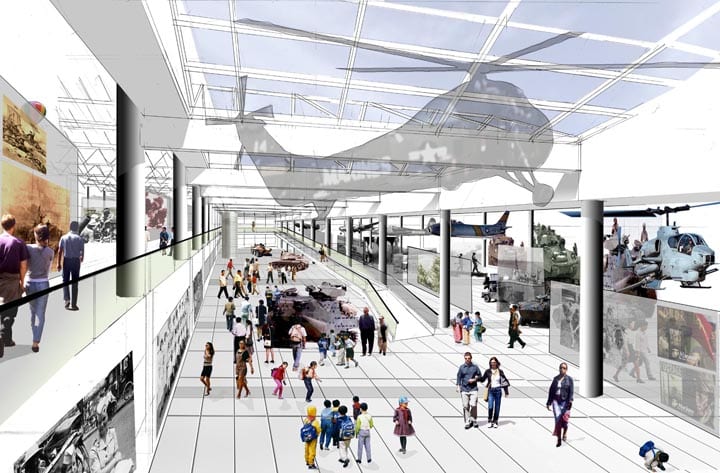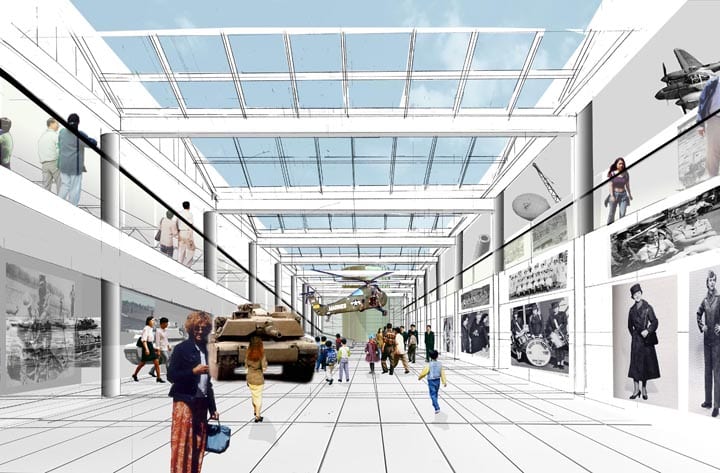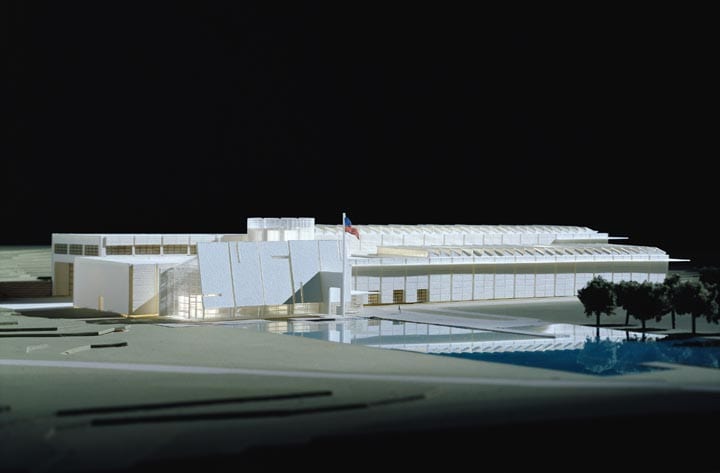Marine Corps Heritage Center
Quantico, Virginia
Quick Facts:
Client: United States Marine Corps
Market: Public/Civic
Size: 75,000 gsf
Services: Architecture, Sustainability
Project Team: Michael Winstanley – Design Architect, Leo A Daly – Architect of Record
Awards:
Award of Excellence, American Institute of Architects, Northern Virginia Chapter
LEED Gold Design
Michael Winstanley AIA AICP was one of just three designers invited to compete for the Marine Corps Heritage Center design competition. This solution was selected by the design jury as the preferred solution for all elements — aesthetic, programmatic, and site issues. The design is a reflection of the design team’s observations of the Marine Corps and relies on the beauty of efficiency, directness, and poetry.
Efficiency is seen in the simplicity of two bars set side by side and in the structural clarity of the building. Directness is evident in the clearly marked building circulation system and the visitor experience that links all the parts in a simple sequence of spaces. Poetry is illuminated in the intuitive symbolism of the individual components and the overall composition of the architecture. The design also addresses sustainability issues.
Through building orientation and daylighting, Mr. Winstanley was able to (1) reduce energy needs created by normal artificial light requirements; (2) increase life span of museum artifacts; (3) maximize the best color spectrum for museum viewing; and (4) reduce heat gain from artificial light sources. The orientation also suggests that photovoltaic cells be used to generate electricity at approximately two megawatts per day – enough to power all the lights within the facility.
Through the addition of an artificial pond, the design not only extends the existing wetlands, but also provides for heat dissipation during the summer months and heat recovery during the winter months. Incorporating this system into the mechanical chiller and boiler cycling will reduce the heating and chilling requirements and will result in lowered system operation and replacement costs for all mechanical equipment.

